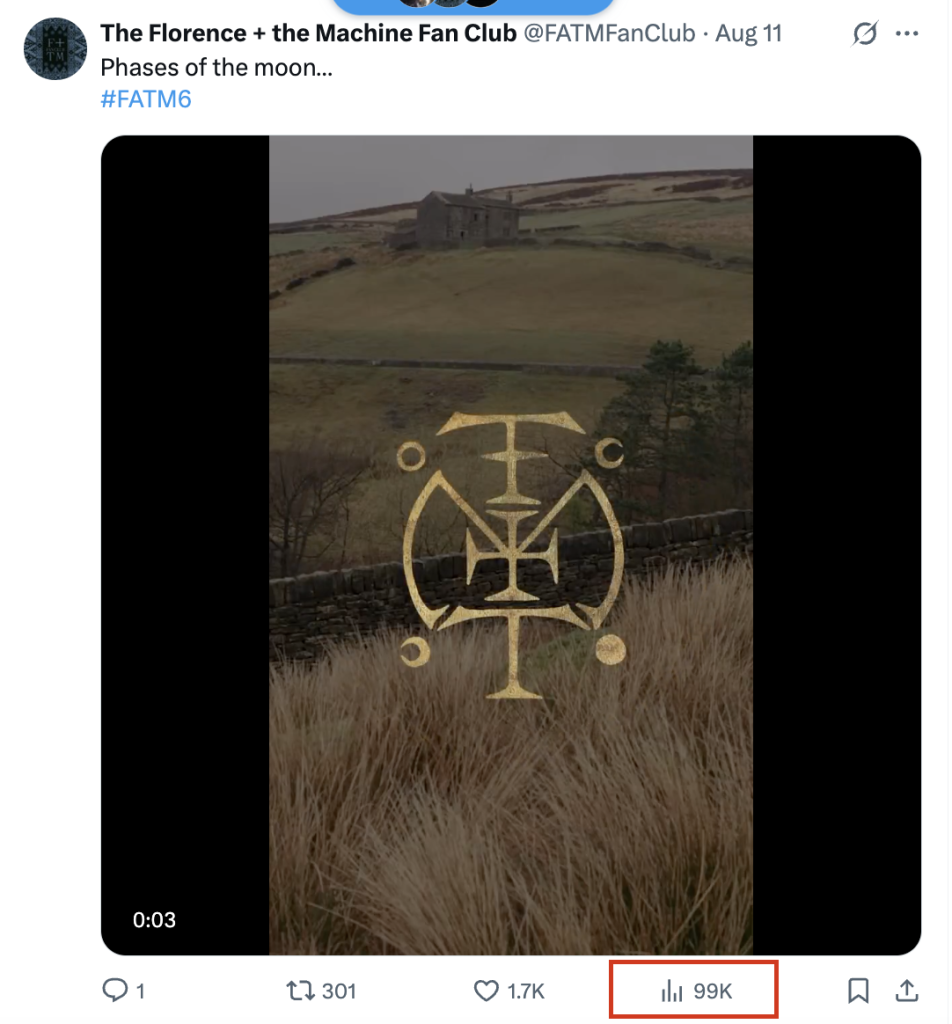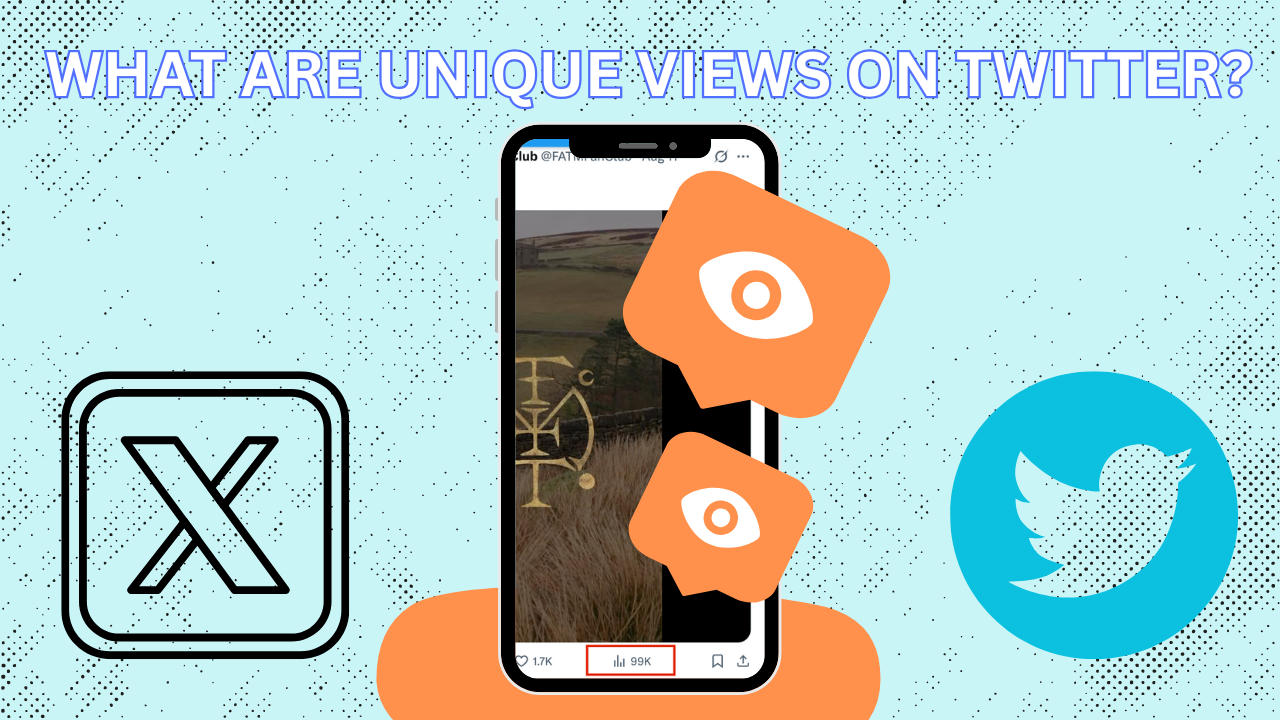Twitter, now known as X, is still one of the most popular social media platforms for brands and businesses. If you’re tracking your performance and trying to reach more people, you may have asked yourself: what are unique views on Twitter?
Simply put, they count how many unique users have seen a tweet, not how many views from the same user. This helps us understand tweet performance beyond just a high view count. It is a truer metric of how many people total are seeing your content.
Unlike general Twitter views, which can include repeat views from the same person, unique views count how many users interact with a post within a specific date range.
In this article, we are going to dive into Twitter unique views and how they can affect your X analytics. Let’s check it out!
Key Takeaways
- Unique views show true reach – these views count how many different Twitter users see a tweet, not repeated views from the same person.
- Different from total views – Total views include all impressions, while unique views only count the first time each user sees it.
- Helps measure real impact – A high unique view count on Twitter means your content is reaching more new people, not just the same audience over and over again.
How Do Unique Views on Twitter Work?

Understanding unique views on Twitter is key to tracking real reach.
Unlike regular Twitter views, which count every time a tweet appears on a screen regardless of who sees it, unique views count how many individual Twitter users see it.
So, it still counts as one unique view if a Twitter user views your post numerous times.
How do we know? The Twitter platform tracks these unique views by counting different Twitter users interacting with a tweet over a period of time (date range).
Each viewer counts towards the view count. Unique views are the way to measure true audience reach. The tweet can be viewed directly in the Twitter feed, in search results, or on a web page.

How to Check Unique Views in Twitter Analytics
Unfortunately, checking unique views on Twitter isn’t as easy as checking Twitter view counts, but you can estimate how many number of times unique users have seen your tweets.
Here’s how:
Step 1: Open Twitter Analytics
- Log into your Twitter account.
- Click on More in the left-hand menu, then select Creator Studio > Analytics.
Note: You have to be an X Premium user to access Twitter analytics, which means you’ll need a paid subscription to be able to check the analytics for the following steps.
If you have one already, you’re all set; if not, you may want to sign up so you can stay on track with the different metrics that showcase your Twitter performance.
Keep going to answer what are unique views on Twitter:
Step 2: Choose a Date Range
- In the dashboard, select a date range to look at your tweet activity.
- This will track engagement metrics over time, including how multiple tweets perform.
Step 3: Find Your Tweet Performance Data
- Click on Tweets to see individual tweet metrics.
- Look at Impressions (total Twitter views), this includes multiple views from the same user.
Step 4: Compare Engagement Metrics
- Look at Engagement Rate, Link Clicks, and Profile Visits to see how different twitter users are interacting with your content.
- A lot of Twitter views but low engagement may mean repeated views from the same account.
Step 5: Estimate Unique Views
Twitter doesn’t show a unique view count, so you can estimate it by:
- Total Impressions vs. Engagements (big gap means the same account has viewed the tweet multiple times).
- Tracking New Followers and Profile Visits – new eyes on your content.
- Promoting tweets – new unique users

Unique Views vs. Other Tweet Metrics
Unique views offer a different perspective compared to other tweet metrics.
View count measures how often a tweet is displayed, it doesn’t distinguish between repeat views from the same user and those from unique users.
Other key Twitter engagement metrics include:
- Profile visits – Shows how many Twitter users checked your profile after seeing a tweet.
- Link clicks – Measures how often people clicked on a shared URL.
- Engagement rate – Compares interactions like likes, replies, and retweets against total Twitter views.
- Promoted tweets – Help boost Twitter view counts but don’t always guarantee more unique users.
Conclusion
What are unique views on Twitter?
They tell us how many real people have seen a tweet, each one a potential customer, follower or fan.
It’s not just about numbers but impact.
A tweet seen by 10,000 people once is way more powerful than one seen 10 times by the same 1,000 people – that’s the difference between noise and influence.
If you want more unique users and better Twitter strategy, services like Twesocial’s buy Twitter views can help.
The goal isn’t to be seen, it’s to be remembered.

Frequently Asked Questions: What are Unique Views on Twitter?
Still have some questions or doubts regarding what are unique views on Twitter? We are here to help! Check out our FAQ section before you get back to analyzing your X metrics:
What is the meaning of unique views in Twitter?
Unique views on Twitter refer to the number of unique users who have seen a tweet.
Unlike total Twitter views, which count every instance a tweet appears on someone’s screen (even if it’s the same user multiple times), unique views focus on how many different people have seen it.
What is the difference between views and unique views?
The key difference is repetition. Views (or total Twitter views) count every time a tweet is displayed, even if the same account sees it multiple times.
Unique views, on the other hand, only count the first time each unique user sees it.
If one person refreshes their feed and sees the same tweet again, that adds to total view count but not unique views.
What are unique viewers?
Unique viewers are Twitter users who have seen a tweet at least once.
If 500 different people see a tweet, there are 500 unique viewers, even if the total view count is much higher due to repeated impressions from the same users.
What is the difference between raw views and unique views?
Raw views (also called total view count) include every time a tweet is displayed, even if it’s the same account viewing it repeatedly.
Unique views filter out repeated impressions from the same person, showing only the number of distinct Twitter users who have seen it.


